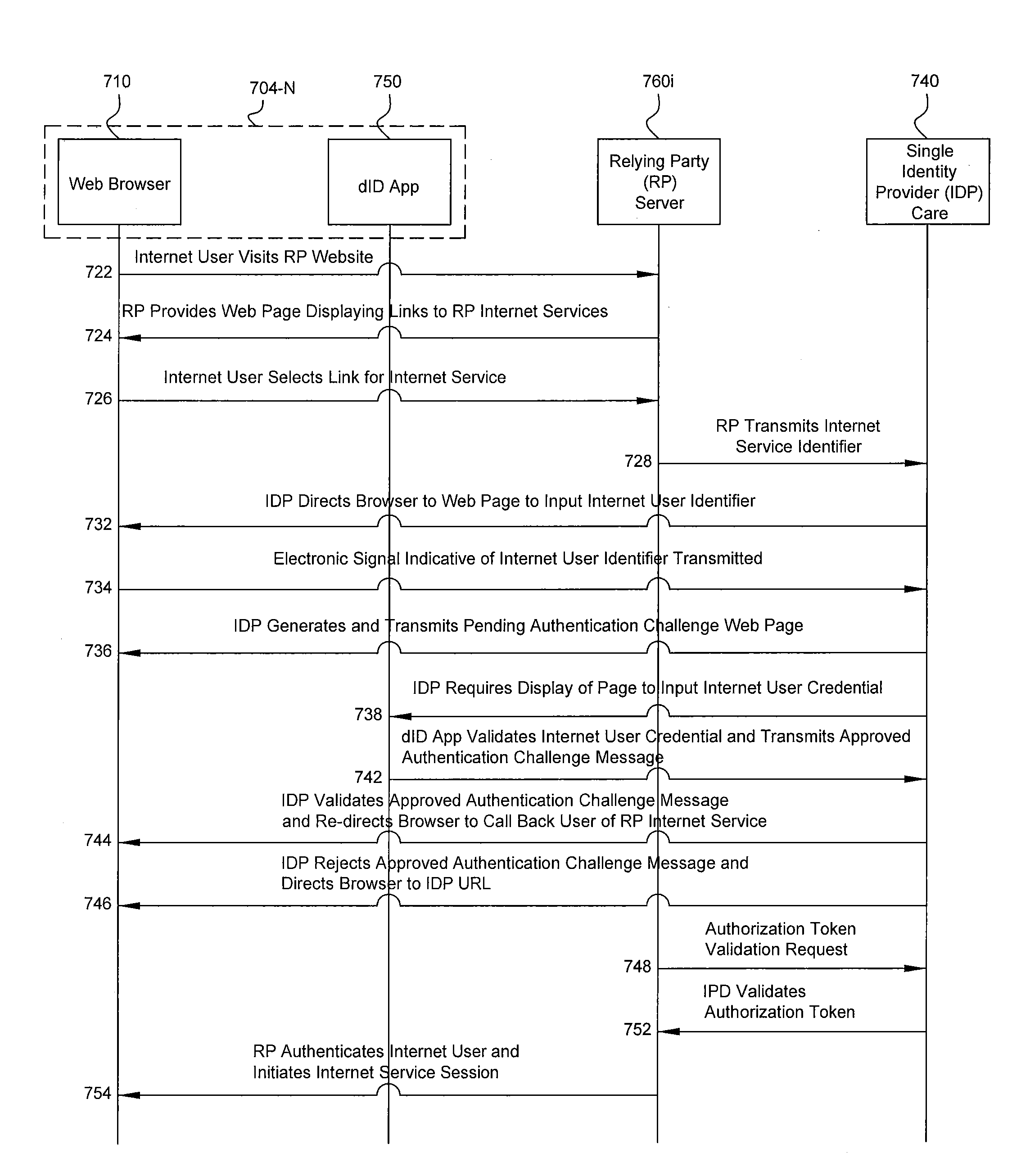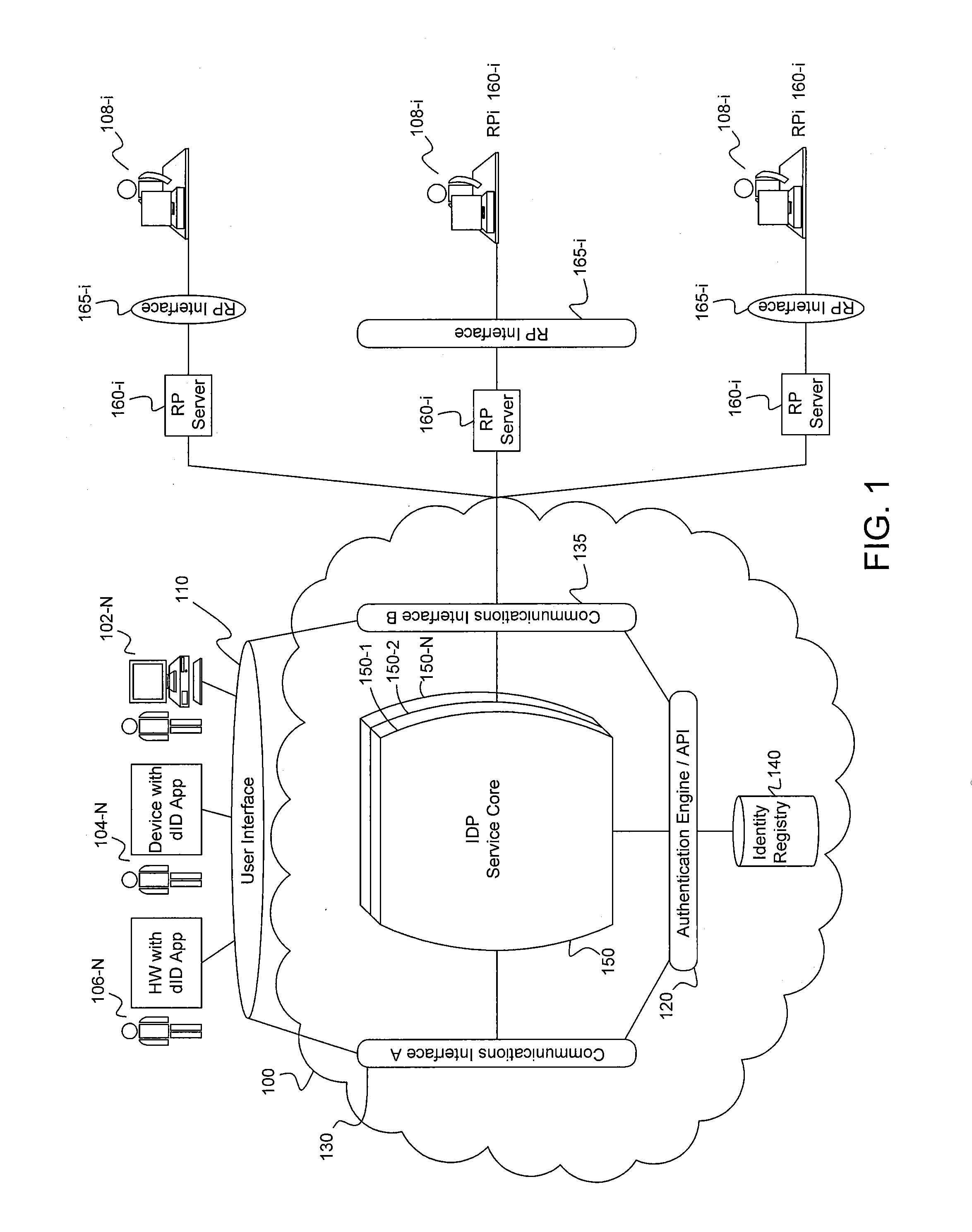Computer-implemented systems and methods of device based, internet-centric, authentication
a computer-implemented system and authentication technology, applied in the field of internet services provided, can solve problems such as the vulnerability of authentication to security breaches, and the theft of 1.2 billion passwords from network-accessible password databases
- Summary
- Abstract
- Description
- Claims
- Application Information
AI Technical Summary
Benefits of technology
Problems solved by technology
Method used
Image
Examples
Embodiment Construction
[0028]With reference to the Figures, where like elements have been given like numerical designations to facilitate an understanding of the drawings, the various embodiments of a computer-implemented system and method of authorizing respective access by each of a plurality of Internet users to a respective one or more Internet services provided by each of a plurality of Internet service providers are described. The figures are not drawn to scale.
[0029]The computer-implemented systems and methods described herein, with their uniquely secure, cost-effective, and device-based schemes, provide a technical solution to resolve the security vulnerabilities and technical adoption challenges arising specifically in existing Internet-centric (e.g. web-based) authentication processes. In various embodiments, Internet users can utilize a respective identity provider application of a single identity provider residing on a respective device that is configured with an authentication token and an us...
PUM
 Login to View More
Login to View More Abstract
Description
Claims
Application Information
 Login to View More
Login to View More - R&D
- Intellectual Property
- Life Sciences
- Materials
- Tech Scout
- Unparalleled Data Quality
- Higher Quality Content
- 60% Fewer Hallucinations
Browse by: Latest US Patents, China's latest patents, Technical Efficacy Thesaurus, Application Domain, Technology Topic, Popular Technical Reports.
© 2025 PatSnap. All rights reserved.Legal|Privacy policy|Modern Slavery Act Transparency Statement|Sitemap|About US| Contact US: help@patsnap.com



